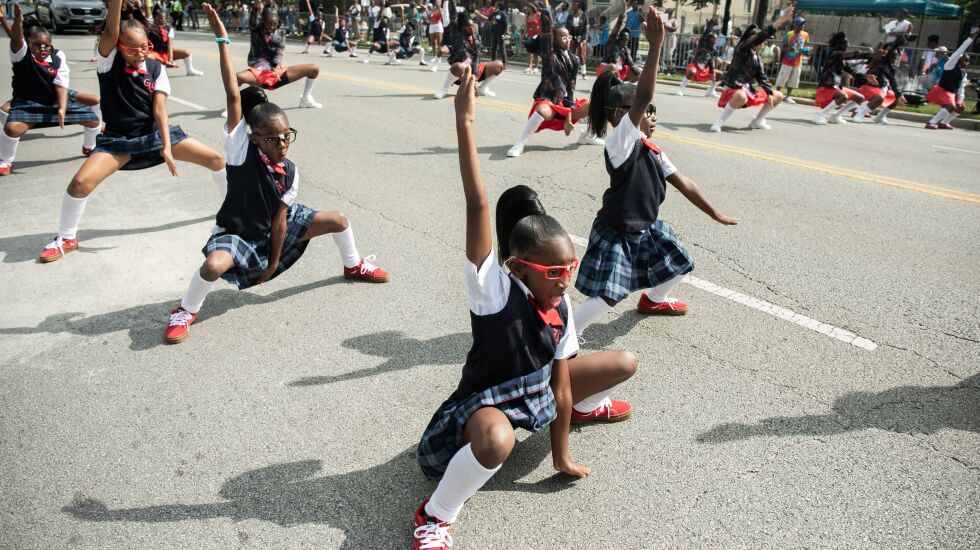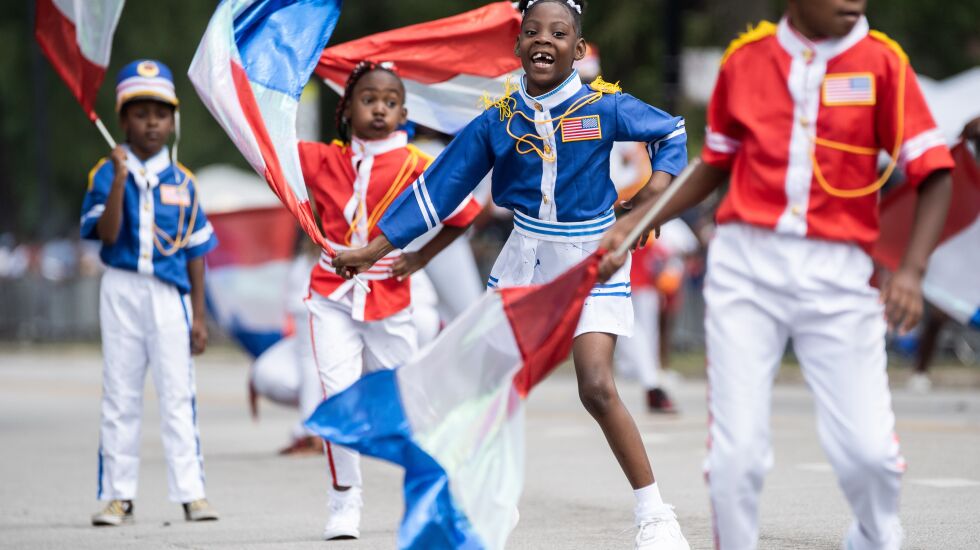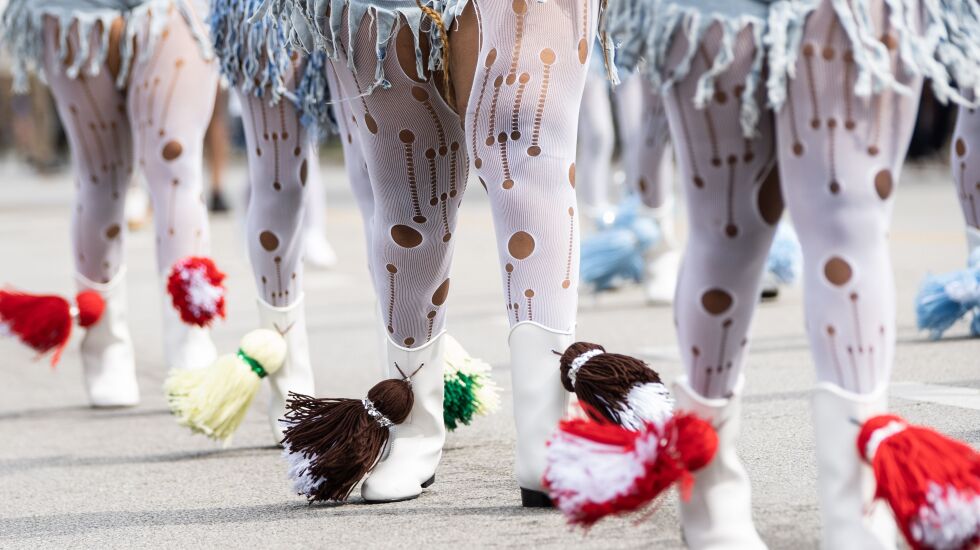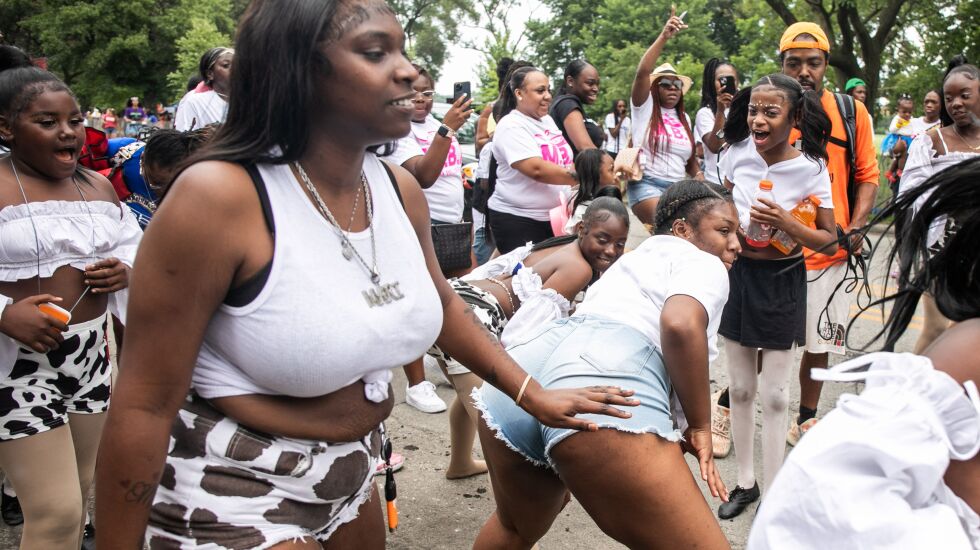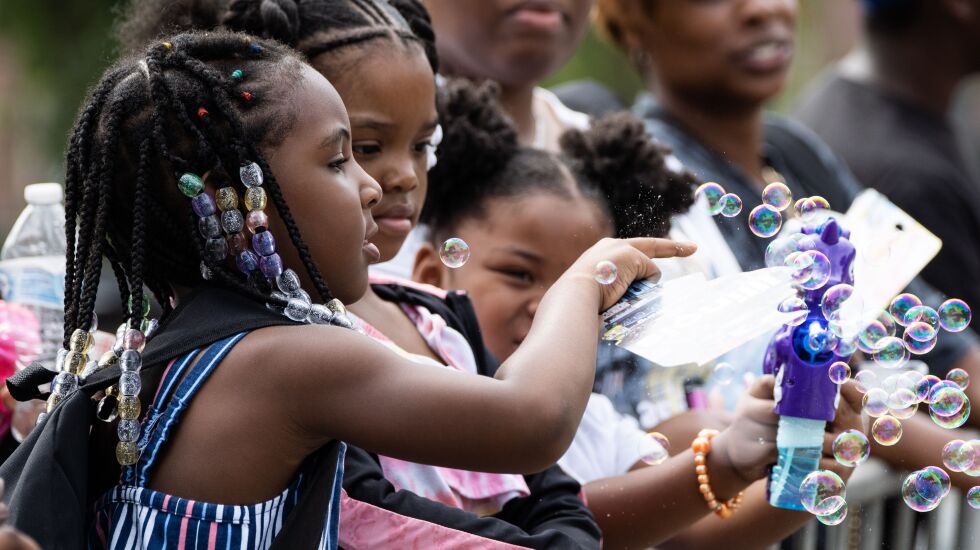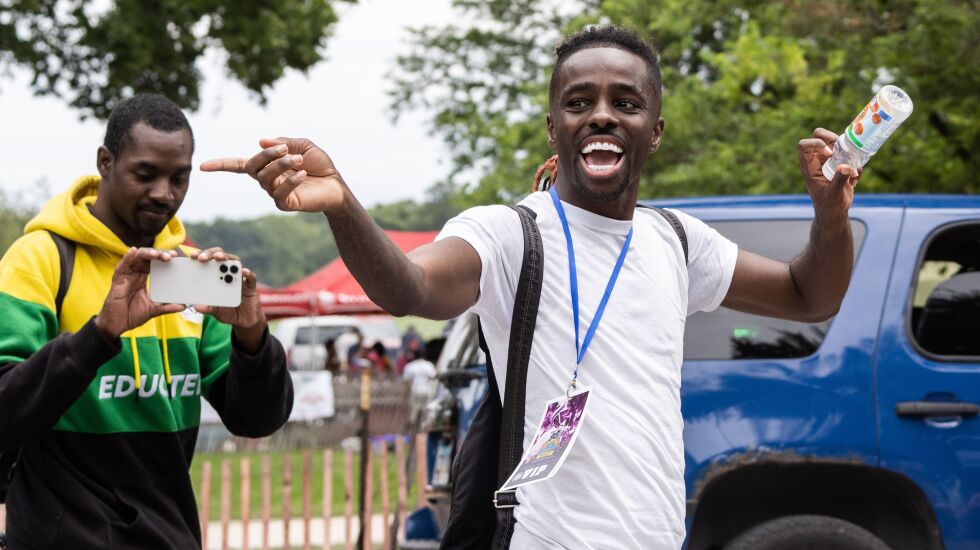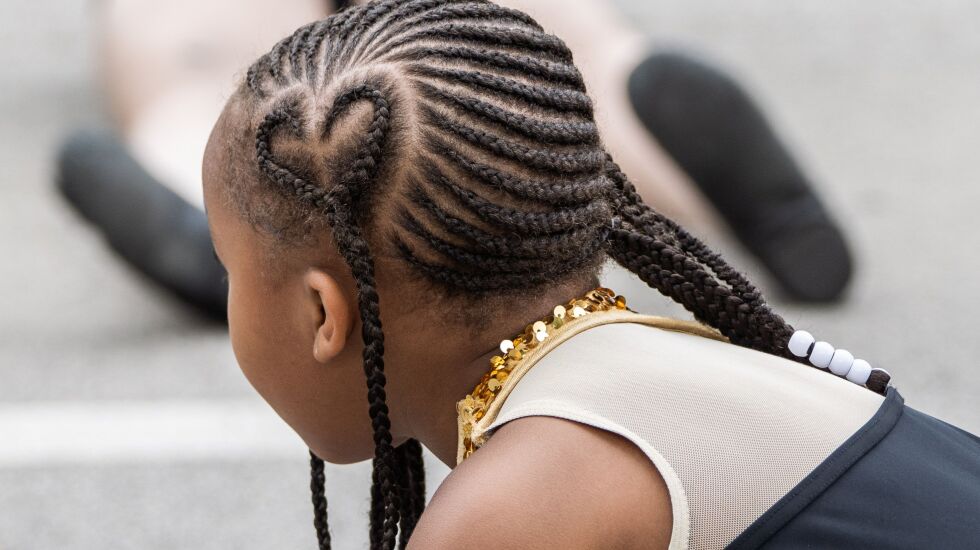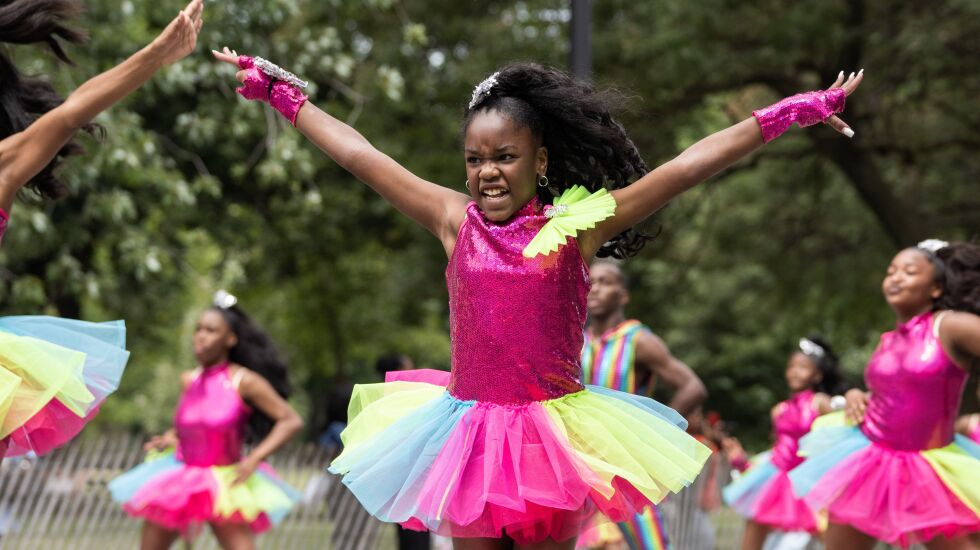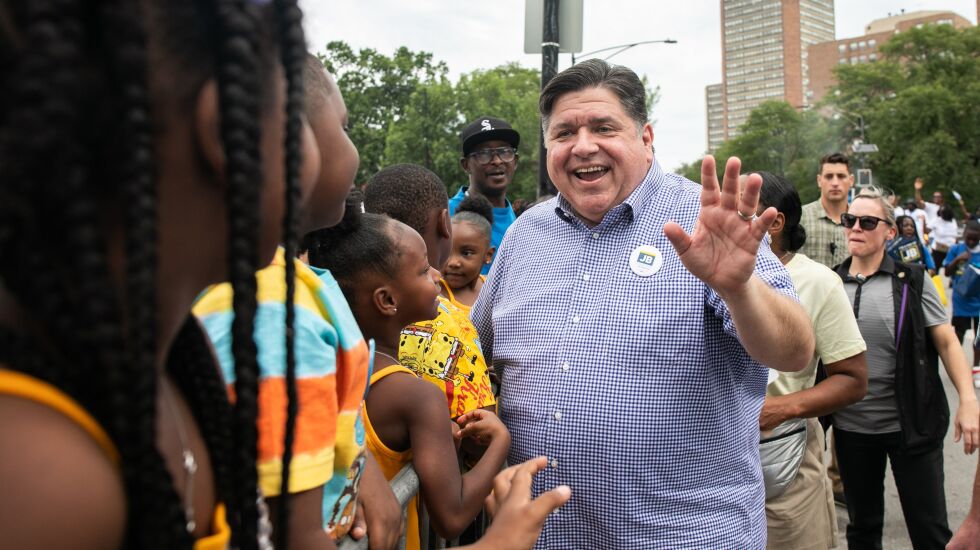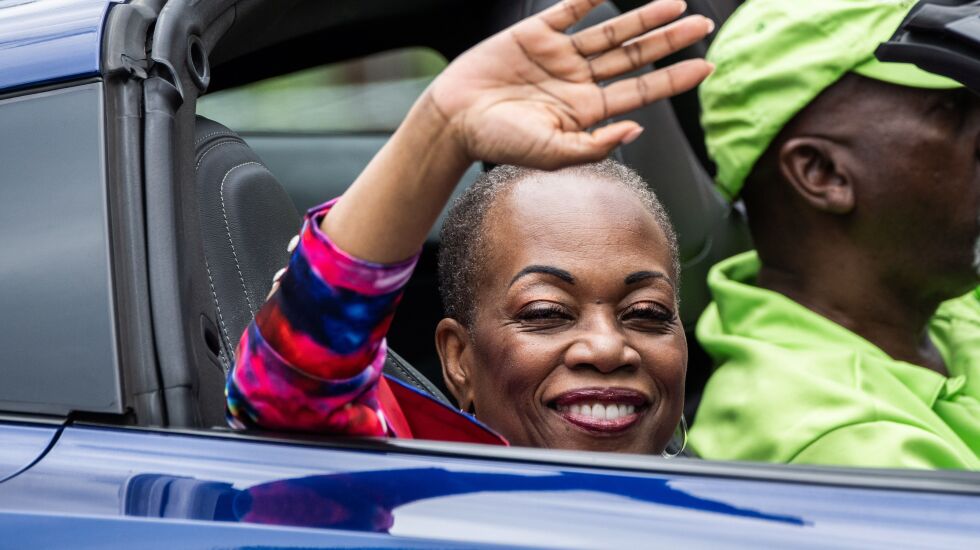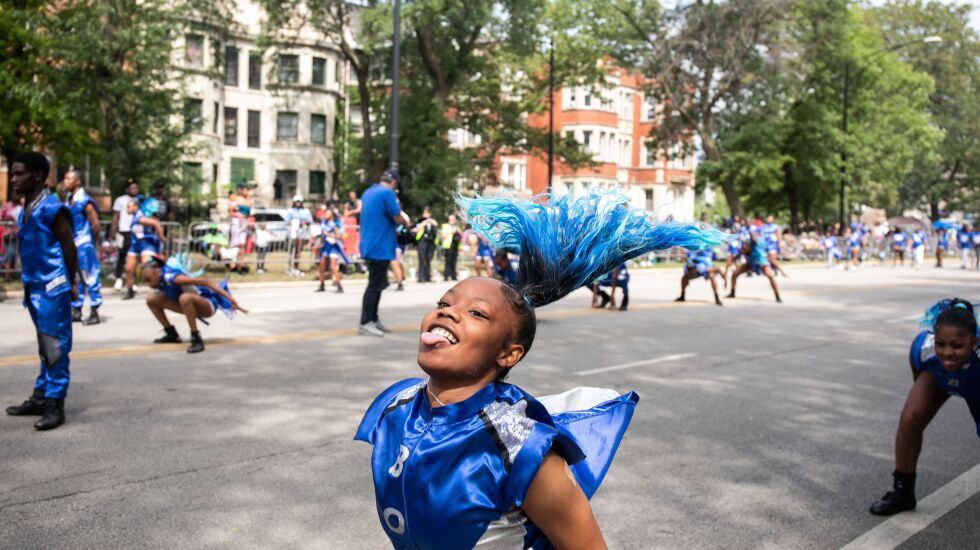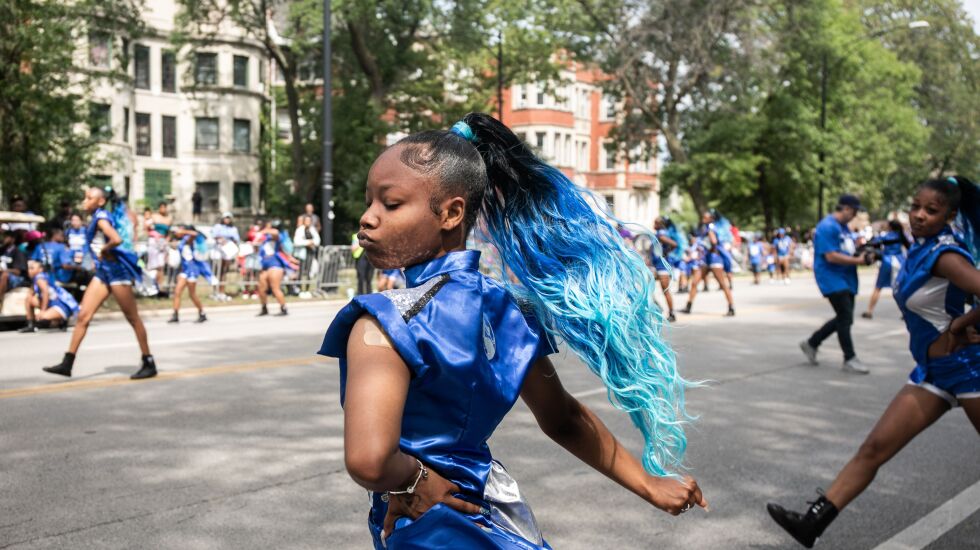
Eight-year-old Kennedy Myles stood wide-eyed, clinging to a barrier separating her from hundreds of floats, drill teams and dance troupes.
It was her first time attending the Bud Billiken Parade, but she’s already got big plans.
“It’s my dream to be in it,” she said.
Myles and her cousin, 7-year-old Megan Gullery, joined thousands of other South Siders in Bronzeville Saturday as the nation’s largest and longest-running African American parade made its 93rd annual way down Martin Luther King Drive. The route pulsed with music as politicians, dancers and others waved, clapped and shook hands.
The yearly back-to-school bash — named for fictional figure Bud Billiken, the brainchild of newspaper publisher Robert Sengstacke Abbott — is widely known for its culmination of many feel-good summer activities: grilling, dancing in the streets and marching band performances.
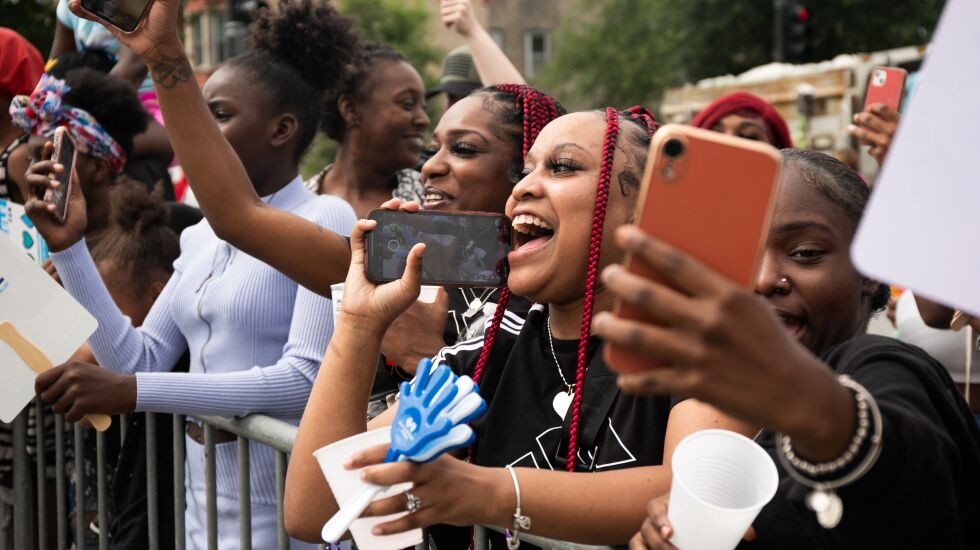
For many, it’s a staple of the summer.
“It’s a historical type of thing for us, even cultural,” said Antasia Barnett, who grew up performing in the parade with the South Shore Drill Team. “That’s a part of the glue, passing it onto the children.”
Now, she brings her sons, nieces and nephews to the parade.
“Between all the snacks, the barbecue, the toys and the performances? They love it,” Barnett said.
Barnett’s son, 7-year-old Demario Woods, said he hopes to one day flip like some of the performers.

The high-energy atmosphere came with a tinge of concern among some, as the parade took place just over a month after a July Fourth parade in suburban Highland Park was ruined by a mass shooting that left seven dead and dozens more injured. Chicago’s top cop said police were “really focused” on security of rooftops along the parade route.
“That was really bad, what happened,” said Noel Bennett, Myles’ and Gullery’s grandmother. “I just pray it doesn’t happen here.”
The parade ended up going off without a hitch as it returned in full force following a pandemic cancelation in 2020 and a shortened route last year. Lamar Austin, who lives on Oakwood Boulevard near the start of the parade route, said this year’s event was “bigger and better” than in 2021.
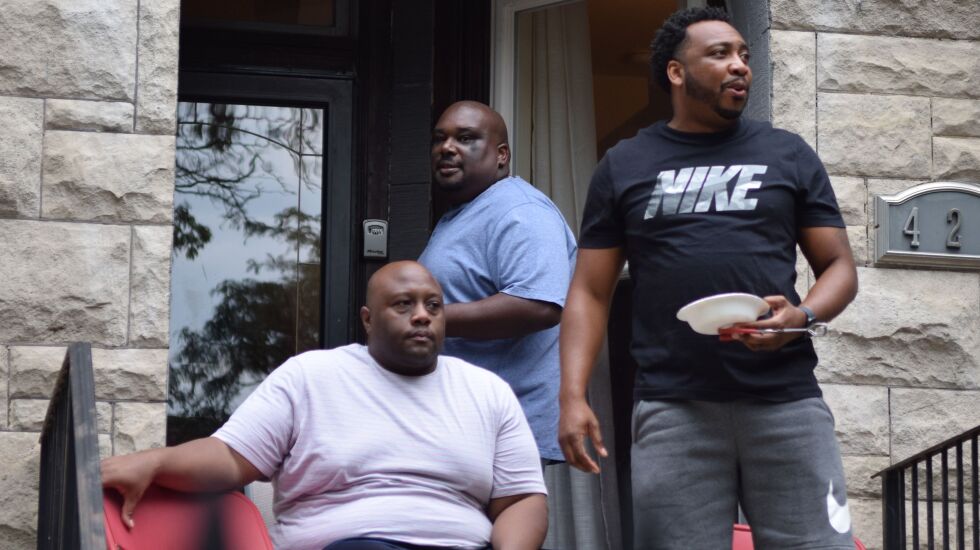
A fan of the Jesse White Tumblers, Austin hosted family in town from Las Vegas and planned to keep the festivities going at a block party after the parade.
“I’m seeing more kids, more performing arts, more dance routines. It used to be just floats,” Austin said. “It’s more community involvement.”
The floats included the Chicago Transit Authority, Chicago Teachers’ Union, Chicago Park District and more, along with politicians and dance teams. Vendors sold water bottles out of coolers, T-shirts and balloons in the shape of unicorns and Dora the Explorer, as bubbles floated through the breeze and kids danced and played tag.
“It’s just so lively, and I’m a lively person,” said Sheila Northington, a lifelong Chicagoan who attended the parade for the first time this year with her grandchildren.
Robert Powell, the self-described “cool poppa on roller skates,” joined the CTA float to partake in his 16th Billiken Parade.
“I still roll,” the 73-year-old said, adding that he also danced in seven iterations of the parade when he was a kid. “You can dance on these skates too.”
“I feel like I don’t have to go to the gym today,” Powell said. “I’m getting it all out here in front of these people.”
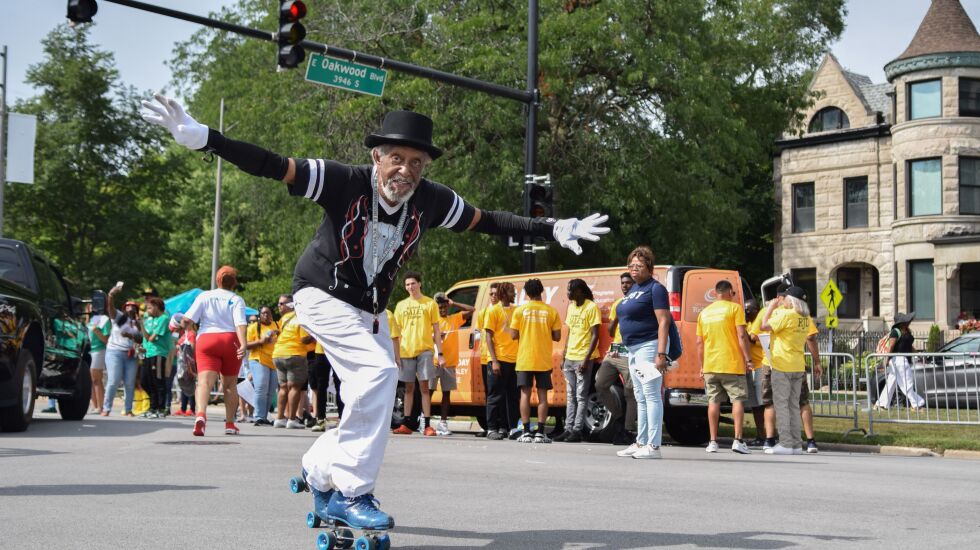
Parade dancers were greeted by loud whoops and cheers as spectators danced along and took photos. For some, like Shavon McClendon, it’s a nostalgic experience.
McClendon performed with the South Shore Drill Team for six years when she was younger, and the parade brought back her memories of 10-hour practices and team camaraderie.
“It’s kind of emotional in a way. I grew up on that team,” she said. “It’s like being at home.”
